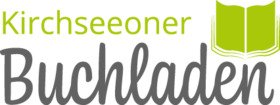Technology-enhanced learning is a timely topic, the importance of which is recognized by educational researchers, practitioners, software designers, and policy makers. This volume presents and discusses current trends and issues in technology-enhanced learning from a European research and development perspective. This multifaceted and multidisciplinary topic is considered from four different viewpoints, each of which constitutes a separate section in the book. The sections include general as well as domain-specific principles of learning that have been found to play a significant role in technology-enhanced environments, ways to shape the environment to optimize learners- interactions and learning, and specific technologies used by the environment to empower learners. An additional section discusses the work presented in the preceding sections from a computer science perspective and an implementation perspective.
This book comes out of the work in Kaleidoscope: a European Network of Excellence in which over 1,000 people from more than 90 institutes across Europe participate. Kaleidoscope brings together researchers from diverse disciplines and cultures, through their collaboration and sharing of scientific outcomes, they are helping move the field of technology-enhanced learning forward.
Preface SECTION 1: Learning principles Chapter 1The evolution of research on computer-supported collaborative learning: From design to orchestrationPierre Dillenbourg, Sanna Järvelä, and Frank Fischer Chapter 2Developments in inquiry learningWouter R. van Joolingen and Zacharias C. Zacharia Chapter 3Sociocultural perspectives on technology-enhanced learning and knowingRosamund Sutherland, Berner Lindström, and Life Lahn Chapter 4Narrative learning in technology-enhanced environments: An introduction to Narrative Learning EnvironmentsGiuliana Dettori and Ana Paiva SECTION 2: Learning in specific domains Chapter 5Building European collaboration in technology-enhanced learning in mathematicsRosa Maria Bottino, Michele Artigue, and Richard Noss Chapter 6Integrated digital language learningGeorges Antoniadis, Sylviane Granger, Olivier Kraif, Claude Ponton, Julia Medori, and Virginie Zampa Chapter 7Novel technology for learning in medicineVanda Luengo, Annette Aboulafia, Adélaïde Blavier , George Shorten, Lucile Vadcard, and Jan Zottmann Chapter 8Technology-enhanced learning in scienceEleni A. Kyza, Sibel Erduran, and Andrée Tiberghien SECTION 3: Shaping the learning environment Chapter 9External representations for learning: Headed towards a digital cultureErica de Vries, Stavros Demetriadis, and Shaaron Ainsworth Chapter 10Computer-supported collaboration scripts: Perspectives from educational psychology and computer scienceArmin Weinberger, Ingo Kollar, Yannis Dimitriadis, Kati Mäkitalo-Siegl, and Frank Fischer Chapter 11Users- data: Collaborative and social analysisAndreas Harrer, Alejandra Martínez-Monés, and Angelique Dimitracopoulou Chapter 12Users- data: TrailsanalysisChristophe Choquet, Sébastien Iksal, Mark Levene, and Judith Schoonenboom SECTION 4: Special technologies Chapter 13A patterns approach to connecting the design and deployment of mathematical games and simulationsDave D. Pratt, Niall Winters, Michele Cerulli, and Henny Leemkuil Chapter 14Mobile learning: Small devices, big issuesMike Sharples, Inmaculada Arnedillo-Sánchez, Marcelo Milrad, and Giasemi Vavoula Chapter 15Learning from multimedia and hypermediaPeter Gerjets and Paul Kirschner Section 5: Postface Chapter 16A computer science perspective on technology-enhanced learning researchPierre Tchounikine, Anders I. Mørch, and Liam J. Bannon Chapter 17Implementing technology-enhanced learningDiana Laurillard, Martin Oliver, Barbara Wasson, and Ulrich Hoppe Subject index Contributors
 Und dann auf "Zum Home-Bildschirm [+]".
Und dann auf "Zum Home-Bildschirm [+]".






































